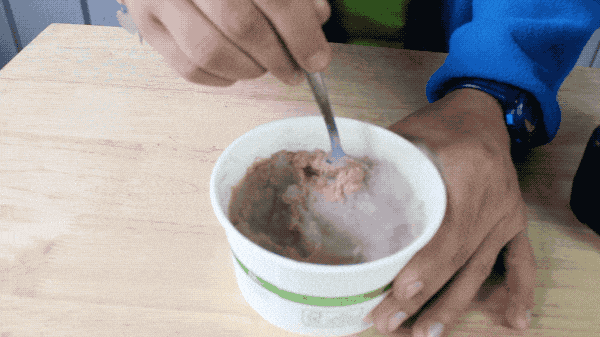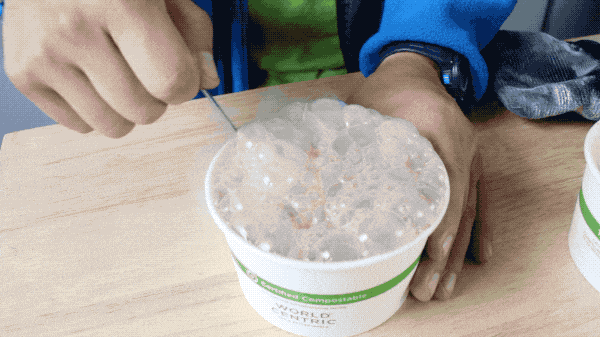
You’ve probably heard of liquid nitrogen ice cream before. It’s made by mixing together ice cream ingredients with liquid nitrogen, which turns into a gas at -321º F. Learn more about that at https://www.thoughtco.com/cryogenics-definition-4142815. The intense coldness is what turns the ice cream ingredients from a liquid to a tasty solid.

So by this logic, you should be able to make ice cream by just adding something really cold to your ice cream ingredients. Solid carbon dioxide, AKA dry ice, is a good candidate to experiment with. To be a solid, carbon dioxide has to be at least -109º F! When you mix dry ice into ice cream ingredients, something interesting happens. It does cool it down, but you additionally get a lot of bubbles. As the carbon dioxide sublimates from solid to gas, little pockets of gas gets trapped underneath the ice cream, and they escape to the surface in little bubbles of CO2.

Why don’t these bubbles form with liquid nitrogen? Both dry ice and liquid nitrogen are turning into gases. But, it’s a lot easier for a solid to sink to the bottom of the ice cream mix than a liquid. When making liquid nitrogen ice cream, if you leave the nitrogen alone, you won’t see it sink down to the bottom of the ice cream. So when the liquid nitrogen evaporates, the gas simply rises from the top of the mixture into the room.

The little carbon dioxide bubbles that escape are the same as bubbles in a soda. That’s why it’s called carbonation! So in a way, you can create a sort of carbonated soft serve by mixing ice cream ingredients with dry ice– but be ready for it to be a bubbly mess.

Note: You should never ingest liquid nitrogen or dry ice. It will burn you and harm you. When people eat liquid nitrogen ice cream, they’re just eating the ice cream ingredients, with all the liquid nitrogen changing phase into a gas before consuming it. The liquid nitrogen merely acts as a mechanism to cool down the ingredients.
Written By: Amanda Williams

